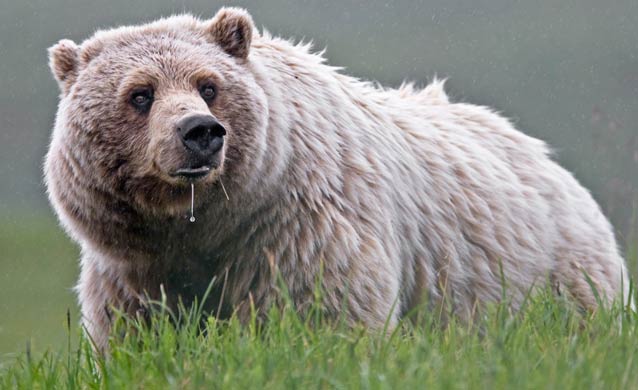Since a 1982 peak of bear-human incidents, Denali's rules on food storage and extensive visitor education aim to minimize injurious encounters.

NPS Photo / Ken Conger
Any program to manage bear-human conflict begins with people management, and Denali National Park and Preserve (Denali) is no exception. With the completion of a paved road to the park in 1972 and resulting increase in visitation, bear-human conflicts in Denali began to rise. In conjunction with poor food storage practices, increasing numbers of people in bear habitat led to a peak in the number of bear-human conflicts in 1982. That same year, the first bear management technician was hired at Denali, and field testing of bear-resistant food storage containers for backpackers began.
Over the years the program has been refined and seasonal technicians and student interns share implementation of a successful program where serious bear-human interactions are relatively rare. Education of visitors and local staff is a key ingredient in the success of the program. Each summer season commences with training for park and local business employees who are taught how to safely live, work, and recreate in bear country.
Proper use of bear-resistant food containers in the backcountry is emphasized. As the season progresses, technicians spend a large part of each day patrolling high visitor-use areas. They talk to visitors about proper viewing distances for bears and teach them about the dangers of feeding or approaching bears. Unnatural foods can negatively affect bear health. Getting too close to bears stresses them, and sometimes causes them to lose their natural wariness of people, which may lead to property damage or injury to people or bears. Despite the education provided by this program, technicians must sometimes actively manage conditioned bears, those that repeatedly show interest in people and/or facilities. If allowed to continue, this behavior could result in the bear obtaining unnatural food, which would further exacerbate the problem.
Aversive conditioning is the first step in managing a conditioned bear, beginning with yelling and throwing objects at the bear, progressing to projectiles (rubber slugs, bean bags, and fire crackers) fired from a 12 gauge shotgun. If the behavior continues, the next step is to capture and collar the bear, and either release it on site or relocate it to another area. Permanent removal by relocation to a facility or destruction is the last resort. Fortunately, most bears respond to the less intrusive methods, and removal is seldom necessary. Denali's bear management program has been tested and refined over many years. It has proven to be very effective for reducing conflicts between bears and humans in an area where bear density is relatively low and human density highly variable.
Part of a series of articles titled Alaska Park Science - Volume 5 Issue 1: Scientific Studies in Denali.
Last updated: January 20, 2015
